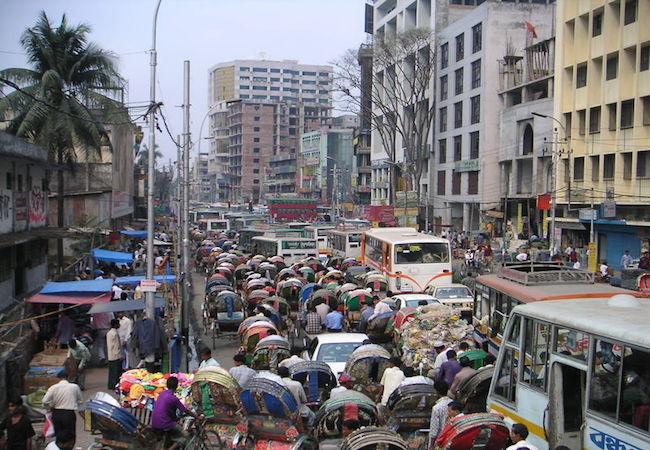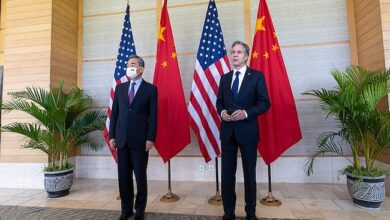
By Fazlur Rahman Chowdhury
We see in the history of civilization the lust for power to have control over others. In old days the kings and emperors conquered other territories to satisfy their ego and lust for power. In modern days it is not possible to conquer other territories. Now the lust of powers is confined within the country. Democracy has replaced monarchism in most countries. In many other countries the king and queen remain for ceremonial requirements (as in the United Kingdom). They merely provide the continuity to a democratic system. The essence of democracy as stated by Abraham Lincoln – “government of the people, by the people and for the people” is the modern philosophy. There are just only a few countries left with absolute monarchism.
There is a new trend – absolute power and dictatorship in the guise of democracy. They normally come through military coup as saviour of nation and continue to establish their love for power. Field Marshal Ayub Khan of Pakistan is a true example of this category. Others come through democratic process but then get addicted to power and refuse to respect the democratic system. Ferdinand Marcos of Philippines is the best example of this category. In recent days we have seen Robert Mugabe of Zimbabwe and Moamar Gaddafi of Libya were trying to remain in power at all costs but finally lost it. The dictator who lost to real uprising of the people was Nicolai Ceausescu of Romania. He was the last one to be executed in Romania after which the death sentence was abolished. Bashar Al-Assad is another cruel dictator in Syria who clings to power no matter more than half the population either killed or left the country.
However, one very refined way of exercising the lust for power is the Russian republic. The constitution does not allow holding the office of the president for more than two consecutive terms. So President Putin had to find a very obedient disciple to hold the office for one term for him (Putin) to return to power for two more terms. However, some degree of oppression and suppression of opposition is also involved.
Dictators and autocrats are mostly corrupt and they allow corruption to flourish to their own benefit. Idi Amin (Uganda), Mugabe (Zimbabwe), Zainal Abdin (Tunisia), Marcos (Philippines) and Suharto (Indonesia) fall into this category. There are other democratic leaders with a bit of greed for power (as they did not tolerate opposition) like Mahathir (Malaysia), Lee Kwan yew (Singapore) and Tyaab Erdogan (Turkey) who perhaps never indulged in financial corruption but they did well for their countries. In all these three countries people enjoyed the benefit of prosperity and well-being.
Finally we come to discuss about some so-called democratically elected dictators. They are Sheikh Hasina in Bangladesh, Hun-Sen of Cambodia, Mussavi of Uganda and Madura of Venezuela. All of them supposed to have come to power through democratic process but are now engaged in research and technology as to how to make the power base permanent for them. In Bangladesh it is the election year and hence we will focus on Bangladesh.
In developing countries there is a general tendency of adopting various unfair practices during election mostly in favour of party in power. This would prevent impartial fair election. So in 1996 Bangladesh came with a unique solution of holding election under non-party care-taker government. This formula was invented by BAL (Bangladesh Awami League) and accepted by the BNP (Bangladesh Nationalist Party) who were then in power. The system required the cabinet and parliament to resign/ dissolve and vacate. The president would then call the recently retired chief justice to form a care-taker government with non-political persons and then the Election Commission would conduct the election. This system was not only good for Bangladesh but also for all other countries where political culture is not so matured and where the party in power always wins the election and losers, even if the elections were fair, usually do not accept defeat. Bangladesh constitution was amended accordingly to make provision for parliamentary general election to be held under care-taker government. The system worked very well until it was repealed by the present government.
After winning the 2008 elections, where BAL got more than 2/3 majority seats, the constitution was again amended to remove the provision of the care-taker government. In bitter memory of losing election in 2001, Hasina and BAL decided not to lose anymore election and fully utilised its 2/3 majority in the parliament. BNP protested this change but BAL remained adamant. Elections were held on 05-March-2014 that was boycotted by BNP. People did not participate enthusiastically and more than 50% MPs were elected unopposed that is to say even before a single vote was cast. Most interestingly Ershad was hi-jacked and put in CMH for medical treatment so that he could not disrupt the election. BAL continued to remain in power illegally.
This time BAL has concentrated all its power and attention to consolidating power to the party, more accurately to the party boss. History is being re-written for all achievements and glories to belong to one family. There is a clear sign of repeating to try what her late father failed to achieve. Try to make Bangladesh one-party state with Sheikh family members as the perpetual rulers. The new history has no place for late Bhasani, Tajuddin Ahmed, General Osmany or Major Zia. Bhasani was the person who made the first good-bye sign to Pakistan. Tajuddin was the first prime minister of Bangladesh and it was under his dynamic leadership that Bangladesh was liberated. Osmany was the commander-in-chief of our freedom fighters/ liberation forces and Zia was the one to declare our independence over radio in the most chaotic time and asked everyone to join the liberation struggle. Despite the fact that putting the un-armed innocent people in front of the barrel of Pakistan army, Sheikh Mujib surrendered and left for Pakistan. His family was well protected and looked after by the Pakistan army. Hasina was taken to CMH by army ambulance for the birth of Joy. No other family enjoyed so much favour from Pakistan army. Yet, we consider Sheikh Mujib as the father of the nation. It does not mean that others had no contribution. The independent Bangladesh does not belong to any person or family.
The all out war to consolidate power to one party and one family is complimented by corruption. Projects are approved and loans taken without any public consultation and work orders are given without any open tender-quotation. The only goal is to make quick money. Bangladesh has one of the lowest wages yet, the cost per unit of construction is one of the highest. Projects are constantly revised to make room for more corruption. At this moment Bangladesh loan liability stands at Taka Forty thousand per person. Banks have given loans but not getting any return. It has reached a stage that ordinary citizens find it difficult to draw their own money from banks. Even the Central Bank lost over $80,000,000 through Cyber crime but no effort on the part of the government to do anything about it. What does it indicate?
The law and order situation in the country is at its lowest ebb. This is because criminals are no more the focus of law enforcement agencies. Their focus is on political leaders of the opposition parties. Dozens die every day under the wheels of trucks and buses because their union leader is a minister in the cabinet. Gang-rape is a new trend and those responsible are never punished because the thugs and criminals have close contact with political party in power i.e. BAL.
What is happening in Bangladesh today reminds us of “Rajtantra and Paribartantra” that late Shiraj Sikder predicted long ago. All new projects, buildings, bridges and institutions are named after one family. Speak or write a word of criticism of this family and you are bound to be behind bars. Journalist Shafiq Rehman managed to escape alive perhaps because of his dual nationality. Mahmudur Rahman spent a long time in jail to know what not to write again. Mahfuz Anam had about hundred cases lodged against him all over Bangladesh until he compromised with BAL to sing the same song. Many political activists have been kidnapped/ hi-jacked not to be seen again. They disappear without a trace. The law enforcement authorities simply deny their involvement in all those disappearances. Extra judicial killings such as cross-fire etc are routine matter. The opposition political leaders are in jail. They are first put into custody and the charges are then framed according to requirements. Police Commissioner grants permission to BAL and all its allied bodies for public meetings and rallies but never grants one for BNP. This is so-called neutrality of police and civil administration. Chatra League, Sramik League, Jubo League are on the streets in addition to Police and RAB to make sure that people only talk about the so-called tide of development activities. You will never be able to see a single banner or placard against the government. What a beautiful democratic country! The recruitment in police and civil service is based not on competence but on loyalty to the party. The country has been made such a police state that our friends and relatives in Bangladesh are scared of talking to us even on telephone. Talk anything but do not ask about political situation. They will cut off the line.
The recent campaign against drug is taken as an excuse to carry-out extra-judicial killings. This is not acceptable in democratic society. The nation would welcome and support such campaign if the criminals were arrested and prosecuted to court with evidence and witness. We do not want to be “moger-mulluk” again.
The last organ of the state to be tamed is the judiciary. Mr Hun-Sen of Cambodia has achieved it successfully. The High Court in Cambodia already declared all opposition leaders as being engaged in sedition and thereby banned them for life from politics. Judiciary there is perfectly loyal to the government. Hasina tried similar thing in Bangladesh. The chief justice was not so easy to surrender. So the government prepared the ground for his resignation. No sooner the chief justice left the country a number of charges against him were announced making sure that he never returns. These activities brought close cooperation between Bangladesh and Cambodia, more specifically between Hasina and Hun-Sen for common goals and aspirations. We call it axis of evils.
As a preparation for the general election (sometime in the last part of the year) the government got a court conviction against Khaleda Zia, the popular leader of BNP. They also got many more cases lined up against her all over the country. Even if she gets bail in one case there is always another one to keep her behind the bar. Under these circumstances participation in the election is meaningless. Everyone can predict the result. Hun-Sen does not lose election in Cambodia, Madura does not lose in Venezuela and Hasina cannot lose in Bangladesh. Participation in the election will only give legitimacy and credibility to a corrupt government. It must not be allowed to happen. Otherwise democracy will be buried once for all. Bangladesh must not be allowed to become Iraq under Saddam where he (Saddam) always got over 98% votes.
This brief article makes a brave attempt to expose and reveal what the present illegal government of Bangladesh is keen to hide and conceal. Over 160 million people are trapped in virtual police state deprived of human rights, freedom of expression, justice, equality and human dignity. The freedom loving people of the world got to know the truth and decide for themselves how best to help. One thing is sure that peaceful coexistence and cooperation for a better tomorrow is not possible unless democracy and human rights are restored everywhere.
Only peaceful way is to re-introduce the system of non-political care-taker government which worked so well. It is very difficult to liberate the country through political or democratic process simply because such process does not exist anymore in Bangladesh. It has to be through liberation war. People in Bangladesh know well about liberation war. They will rise up again and do it. May Allah grant us the power to liberate the country. Let us get free of the corrupt dictators and establish democracy. Democracy is the essence of peace and prosperity.
Fazlur Rahman Chowdhury was the Commandant of the Marine Academy and then Director General of Shipping in Bangladesh. He graduated from Juldia Marine Academy and World Maritime University. He pursued a career as a merchant ship cadet. He eventually retired from the UK Maritime and Coastguard Agency.




